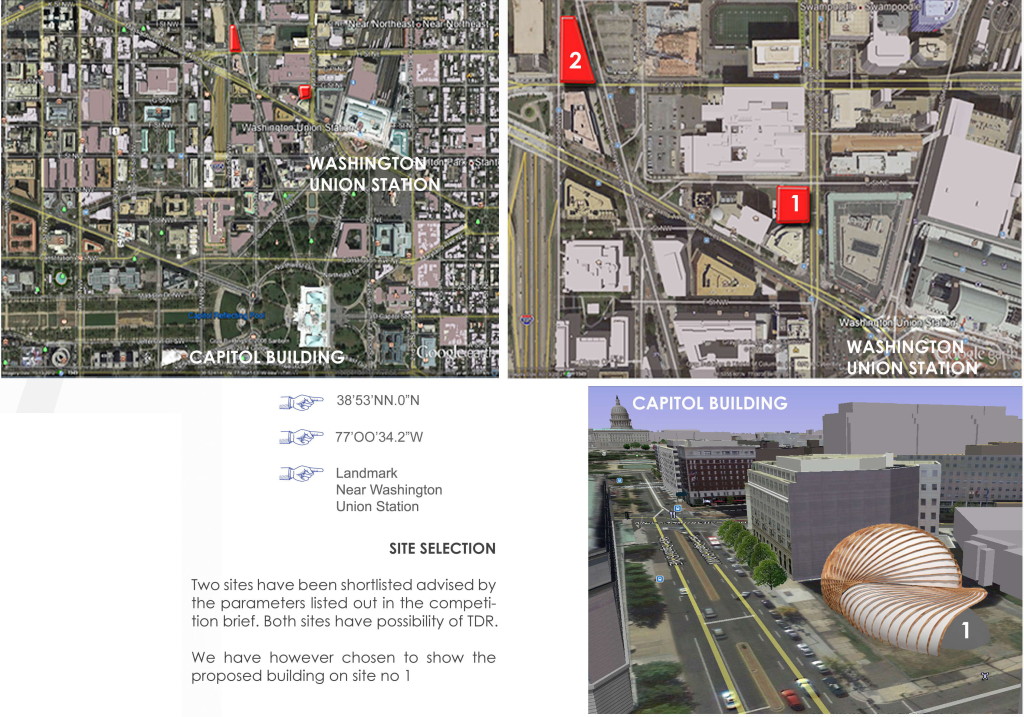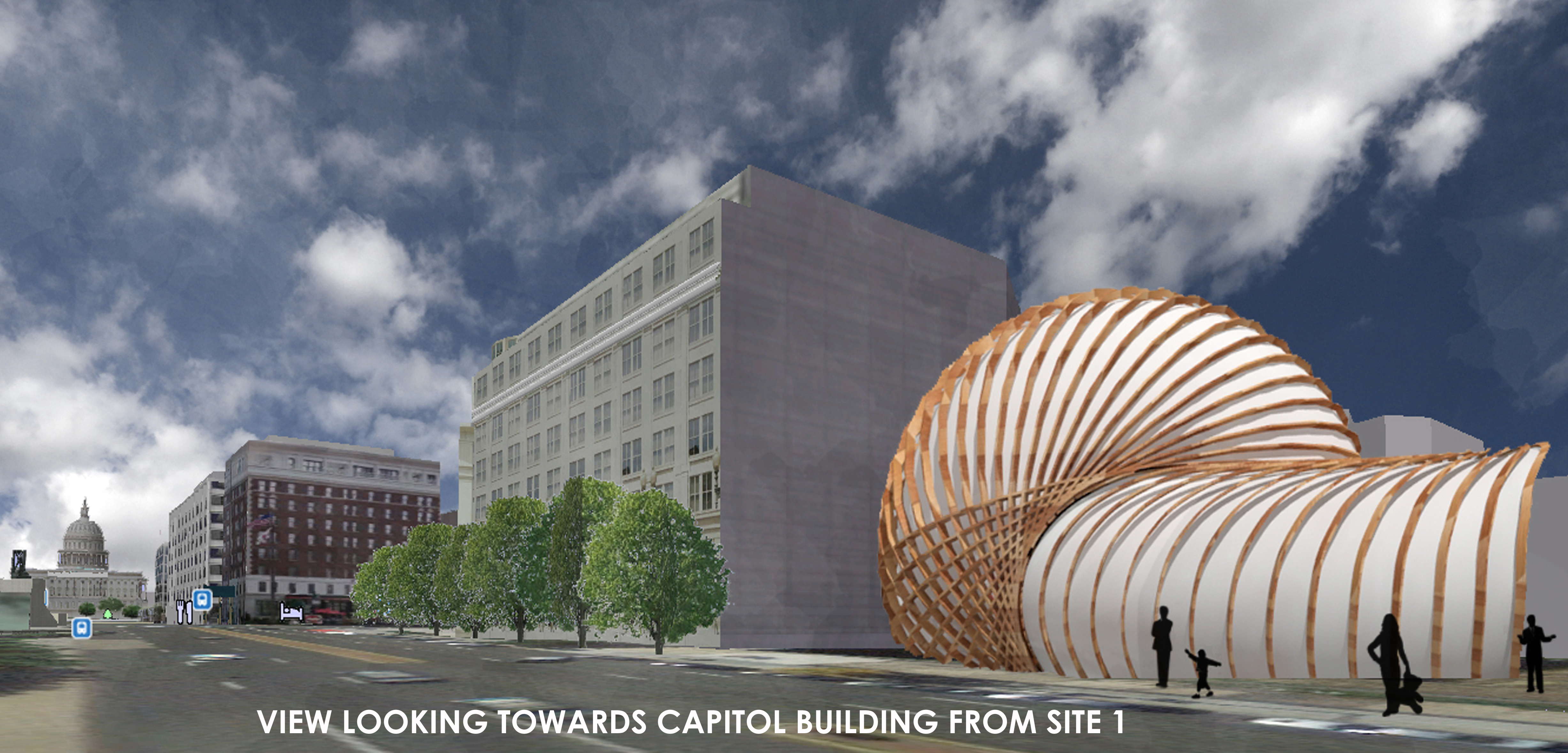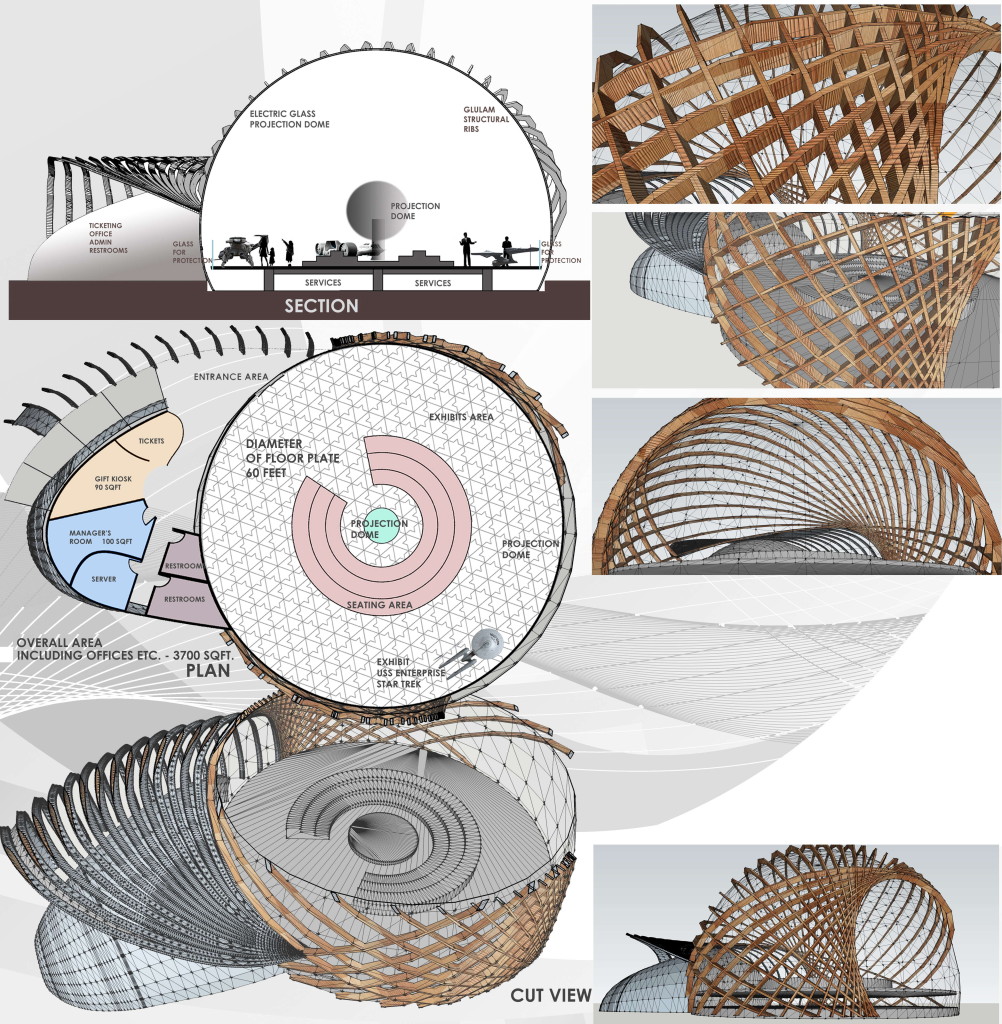IDEA 1

The program brief specifies “Visitor experience” to be a paramount consideration. We believe the exhibits should be viewed on the backdrop of an environment which represents a completely different world than the one we live in. To make this experientially REAL, it is proposed to use spherical projection as a medium to be in. FOOTPRINTS (2006) was the first spherical movie of its kind. Made for Science on a Sphere, it showcases NASA’s exploration, starting on earth and going back in time to the beginning of our universe.
More info: http://verglasmedia.com/footprints
SOS Locations: http://sos.noaa.gov/What_is_SOS/sites…
In 2000, NOAA created Science on a Sphere (SOS) to show data sets in their inherently spherical nature. Since then, SOS has become popular installation in museums, science centers, universities and research facilities world-wide. In 2006, the Goddard Space Flight Center Visitor Center received the eighth SOS in the world, and recognized the unique opportunity it presented to showcase NASA’s science missions, and everyone in the audience needs to experience the same movie, even though the experience could be different. This is the nature of a spherical filmmaking.
THE SELECTION OF A SPHERICAL FORM FOR OUR DESIGN IN THE MOSF COMES FROM SPHERICAL FILMMAKING.
IDEA 2

Both Sci-Fact & Sci-Fi continuously feed each other on the fabric of the SPACE-TIME CONTINUUM. This forms a kind of conduit to cross reference each other. The root of our conceptual thinking therefore begins here. This brings us to another idea, that of DIMESIONAL TRANSENDENCE. The idea of a wormhole can fit in here appropriately.

A wormhole, also known as an Einstein–Rosen bridge, is a hypothetical topological feature of spacetime that would fundamentally be a “shortcut” through spacetime. A wormhole is much like a tunnel with two ends each in separate points in spacetime.- Wikipedia.
This is further described as regions of space-time that constrain the incremental deformation of closed surfaces.
THE TWISTED SPHERICAL GEOMETRY OF THE STRUCTURAL SYSTEM DERIVES ITS FORM FROM THIS IDEA.
SUSTAINABLE

Architect Carlo Ratti’s Local Warming System, which he developed with MIT’s Senseable City Lab, consists of infrared lamps mounted on the ceiling, which tilt and rotate to focus beams of radiation onto people as they pass underneath. It uses motion sensors to focus beams of infrared radiation on people as they move through a building, can be “one order of magnitude more efficient” than traditional methods. “You create an infrared radiation that can be focused and concentrated on people,” Ratti explains. “As you move the infrared radiation will move with you. The lamps throw light in a parallel way, and they can rotate and focus on a person and then create a local climate around them.” The system relies on using motion tracking technology, which can be implemented in a variety of ways. One option, Ratti says, is to use the signals from people’s mobile phones to track their position in a building, which means each person could choose their own temperature settings.
FOOTPRINTS (2006) – External Dome projectionsThe program brief specifies “Visitor experience” to be a paramount consideration. We believe the exhibits should be viewed on the backdrop of an environment which represents a completely different world than the one we live in. To make this experientially REAL, it is proposed to use spherical projection as a medium to be in. FOOTPRINTS (2006) was the first spherical movie of its kind. Made for Science on a Sphere, it showcases NASA’s exploration, starting on earth and going back in time to the beginning of our universe. More info: http://verglasmedia.com/footprintsSOS Locations: http://sos.noaa.gov/What_is_SOS/sites…Atmosphere – Internal Dome projections. 24 students explored the creative potential of immersive media installations. After becoming familiar with the technical foundations as well as the related design principles, the students created atmospheric moods based on three-dimensional compositions of colours, forms and movements for a 7 metre wide dome. A selection of 80 works was exhibited in at Prolight+Sound Shanghai/Messe Frankfurt GmbH (event organiser and sponsor). In order to present the 80 works interactively, I designed a graphical user interface for a multi-touch table that was placed in the centre of the dome (programming: Project Syntropy GmbH). For more – http://www.syncon-d.com/hk/
THE SELECTION OF A SPHERICAL FORM FOR THE MOSF COMES FROM SPHERICAL FILMMAKING.
Both Sci-Fact & Sci-Fi continuously feed each other on the fabric of the SPACE-TIME CONTINUUM. This forms a kind of conduit to cross reference each other. The root of our conceptual thinking therefore begins here. This brings us to another idea, that of DIMESIONAL TRANSENDENCE. The idea of a wormhole can fit in here appropriately. A wormhole, also known as an Einstein–Rosen bridge, is a hypothetical topological feature of spacetime that would fundamentally be a “shortcut” through spacetime. A wormhole is much like a tunnel with two ends each in separate points in spacetime.- Wikipedia.This is further described as regions of space-time that constrain the incremental deformation of closed surfaces.
THE TWISTED SPHERICAL GEOMETRY OF THE STRUCTURAL SYSTEM DERIVES ITS FORM FROM THIS IDEA.
SITE SELECTION

Two sites have been shortlisted advised by the parameters listed out in the competition brief. Both sites have possibility of TDR.We have however chosen to show the proposed building on site no 1.
The platform of the sphere is divided into 8 parts, one each for the exhibits and one for the entrance. The spherical space is constructed out of Electric smart glass which can be white in color when required and transparent at the flick of a switch. It can be projected upon and taking advantage of this quality spherical projection can be done creating visuals of atmosphere and realms for experiential observation. The concave walls of the exhibit backdrop will also act as display panels.









2 Responses
Fascinating. Is Lamina timber structure the fabric of the shell. A great new scenario for the architects in India.
Thank you Jaisim Sir for recognising sustaiable technologies for the future of Indian Architecture.